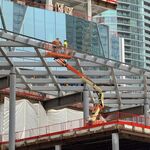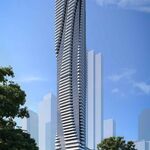If you decide to drive in downtown Oslo, be forewarned: You won’t be able to park on the street. By the beginning of this year, the city finished removing more than 700 parking spots–replacing them with bike lanes, plants, tiny parks, and benches–as a major step toward a vision of a car-free city center.
Without those parking spots, and with cars banned completely on some streets, few people are driving in the area. “There are basically no cars,” says Axel Bentsen, CEO of
Urban Sharing, the company that runs
Oslo City Bike, the local bike-share system. The city’s changes are designed, in part, to help improve air quality and fight climate change, but the difference in the quality of life is more immediate. “The city feels different faster than you can feel the difference in [cleaner air],” he says. “You can see that you’re actually reclaiming the space and can use it for other purposes than parking cars.”
Oslo first pedestrianized some streets in the city center in the 1970s, and invested heavily in public transportation in the 1980s. In 2015, when a progressive political coalition came to power in the city council, they started planning a more significant transformation. At first, they called for a full ban on cars because the majority of residents in the city center didn’t drive. But when business owners objected, worried that they’d lose customers and have problems with deliveries, the government changed focus to remove parking spots–a slightly more gradual approach. For now, there are still parking garages on the periphery of the center.




